Phishing
Come difendersi dal PhishingWhat is phishing?
”Phishing” is a type of fraudolent email that attempts to steal a user's credentials (user name and password). The user is urged to open a web page and type in his or her credentials, which are then stolen and used for illegal purposes.
Fortunately, it's easy not to fall victim of phishing email, as we will see later.
How to tell if it's phishing?
Usually, a phishing email can be spotted as it lures the user to “confirm”, “validate”, or “renew” his or her password by clicking on a link. The phishing message is often written in English, or in more-or-less broken Italian. The web page provided by the phishing email does not belong to University of Verona, even if it looks like it does: it belongs to the attacker!
Phishing examples
Now we examine some examples of phishing, highlighting the elements that mark the messages as phishing. As a comparison, we will also examine the legitimate (and only one!) email message provided by University of Verona when a user's password is about to expire.
The legitimate Univr email
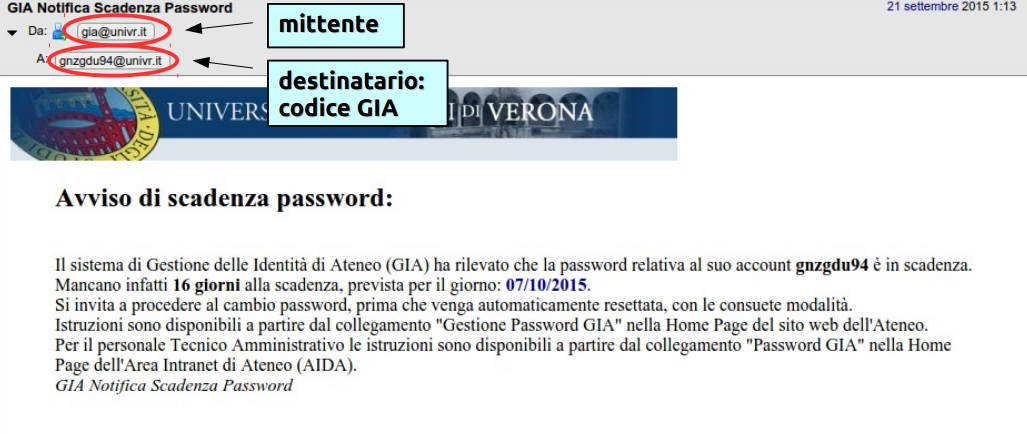
This is the legitimate message that is sent when a password is about to expire. Please note that the message is written in Italian; it does not include links; it contains instructions that point to the Univr home page and Intranet site; it refers to the GIA code both in the “To:” field and in the message body; “From:” is gia@univr.it; it does not urge the user to “validate” or “confirm” his or her password; the subject is “GIA Notifica Scadenza Password”.
Example 1: phishing in Italian
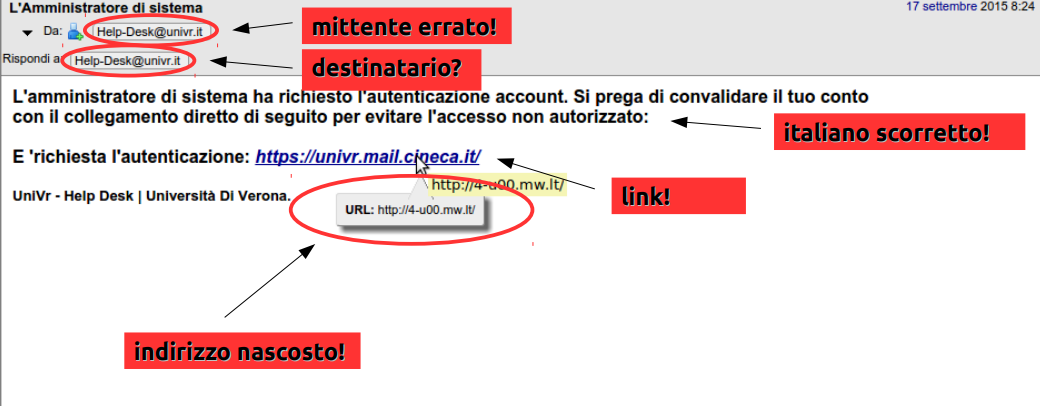
Questo messaggio di phishing si riconosce perché
- it does not come from gia@univr.it;
- it contains the word “convalidare” (validate);
- it contains a link; moving the pointer on it (without clicking!)
- a hidden address is revealed, and it's different than the link shown;
- it's written in broken Italian;
- “From” and Subject are wrong;
- instead of “A:” (To:) there is “Rispondi A:” (Reply to:).
Esempio 2: phishing in italiano
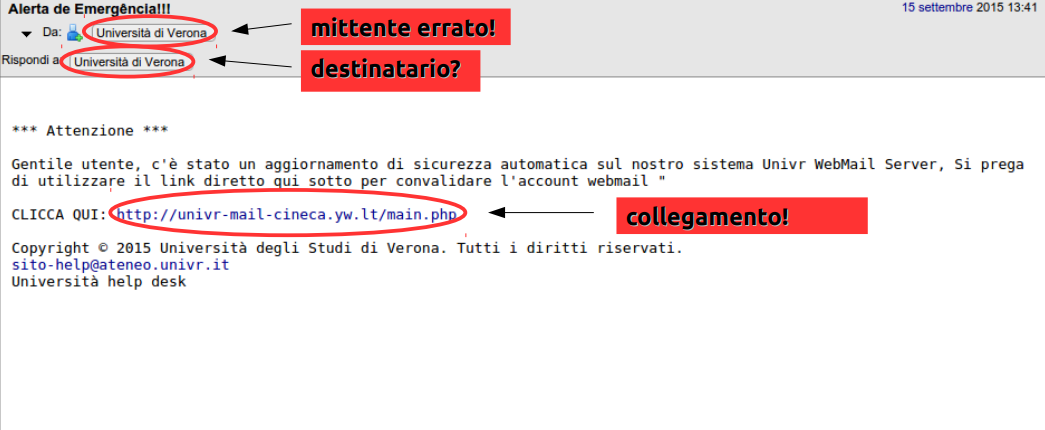
Questo messaggio di phishing si riconosce perché
- it does not come from gia@univr.it;
- it contains the word “convalidare” (validate);
- it contains a link; moving the pointer on it (without clicking!)
- the Subject is not written in Italian (“Alerta de Emergência!!!”)
- “From” and Subject are wrong;
- instead of “A:” (To:) there is “Rispondi A:” (Reply to:).
Esempio 3: phishing in italiano
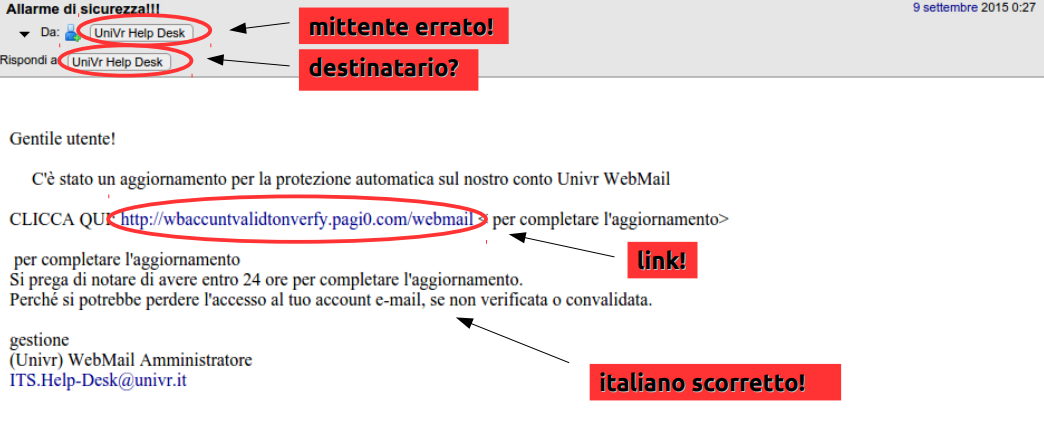
Questo messaggio di phishing si riconosce perché
- it does not come from gia@univr.it;
- it contains the word “aggiornamento” (validate);
- it contains a link; moving the pointer on it (without clicking!)
- the Subject is not written in Italian (“Alerta de Emergência!!!”)
- “From” and Subject are wrong;
- instead of “A:” (To:) there is “Rispondi A:” (Reply to:).
Esempio 4: phishing in inglese
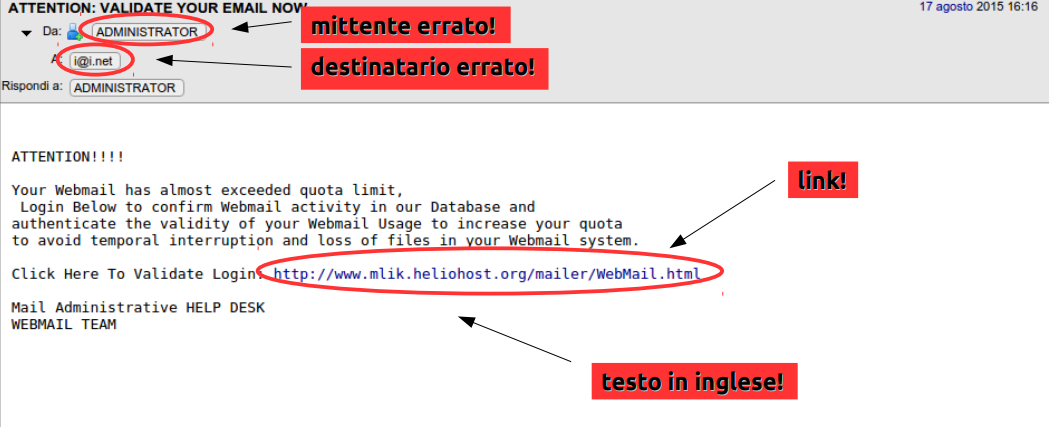
- it does not come from gia@univr.it;
- it's written in English;
- it contains the word “validate”;
- it contains a link;
- “From” and Subject are wrong;
- instead of “A:” (To:) there is “Rispondi A:” (Reply to:).
